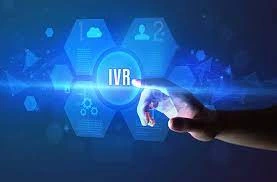Optimizing IVR call flow is an ongoing process, as customer needs and company capabilities evolve. By staying on top of IVR call flows within your system, you can maximize containment rate, decrease hold times, and even avoid many of the causes of call center burnout.
This guide will cover the best practices for designing IVR call flows, common challenges, and how to spot problems in your existing system.
IVR call flow basics
IVR is a standard feature for business phone services and call center software. It provides a simple way to accept calls and encourage callers to exhaust their self-service options before talking to a human agent or receptionist.
When a customer calls in, the automated system greets them immediately by presenting them with a menu of options. These can include transfers to a specific department or agent, accessing recorded information like a business address, or looking up personal account details.
Each menu option corresponds to a number on the caller’s touch-tone keypad. A common example is to “press 0 for the operator.” With this method, callers can easily select the best-fit option or category that suits their needs by pressing the appropriate number.
The customized menu selections and automated checkpoints you create for your IVR system make up your IVR call flow, which is the series of steps that a caller will take from one option to the next until they reach their desired destination.
A single call center IVR system can have dozens or hundreds of potential call flows. The trick is making it as easy as possible for a customer to complete the specific series of steps. A high-performing IVR call flow should feel simple and intuitive, with options that match exactly what customers are looking for without unnecessary steps.
When illustrated in an IVR call flow diagram, it will resemble a phone tree that branches out at each decision point, depicting the customer’s options throughout their journey as a caller.
SEE: Discover the latest IVR upgrades and snag eight free phone tree templates to get started on the right foot.
How IVR call flow impacts containment rate
Containment rate is a key metric in call centers that compares the percentage of calls resolved by the IVR with the total number of calls routed through the IVR. A 50% containment rate indicates that half of all calls are handled successfully by the IVR and the other half require a live agent.
A high containment rate indicates that your IVR call flow is optimized: callers are finding what they need via the IVR system rather than having to speak to an agent.
If you notice containment rate slipping, something is most likely wrong with one or more IVR call flows.
Now there isn’t
an industry standard for containment rate that all call centers try to hit. The nature of customer calls varies too much from place to place. You’ll have to look at past data and set your own baseline.
To calculate containment rate, divide the number of calls that were resolved solely using IVR technology by the total amount of incoming calls. Both of these data points should be easy to find in the analytics dashboard of any modern call center software.
Customers often report a better overall call experience when they are empowered to find answers without an agent’s help. Many times, they can resolve an issue faster this way and prefer it to being stuck in an endless call center queue.
SEE: Uncover the most common reasons for high queue wait times.
Similarly, agents tend to be happier and work more effectively when your containment rate is high. It means they are wasting less time on easily resolvable issues and spending more time managing
complex problems. As the containment rate goes up, agents face a lower call volume — that means less stress and fewer customers that are irritated from waiting on hold.
Explore IT Tech News for the latest advancements in Information Technology & insightful updates from industry experts!

